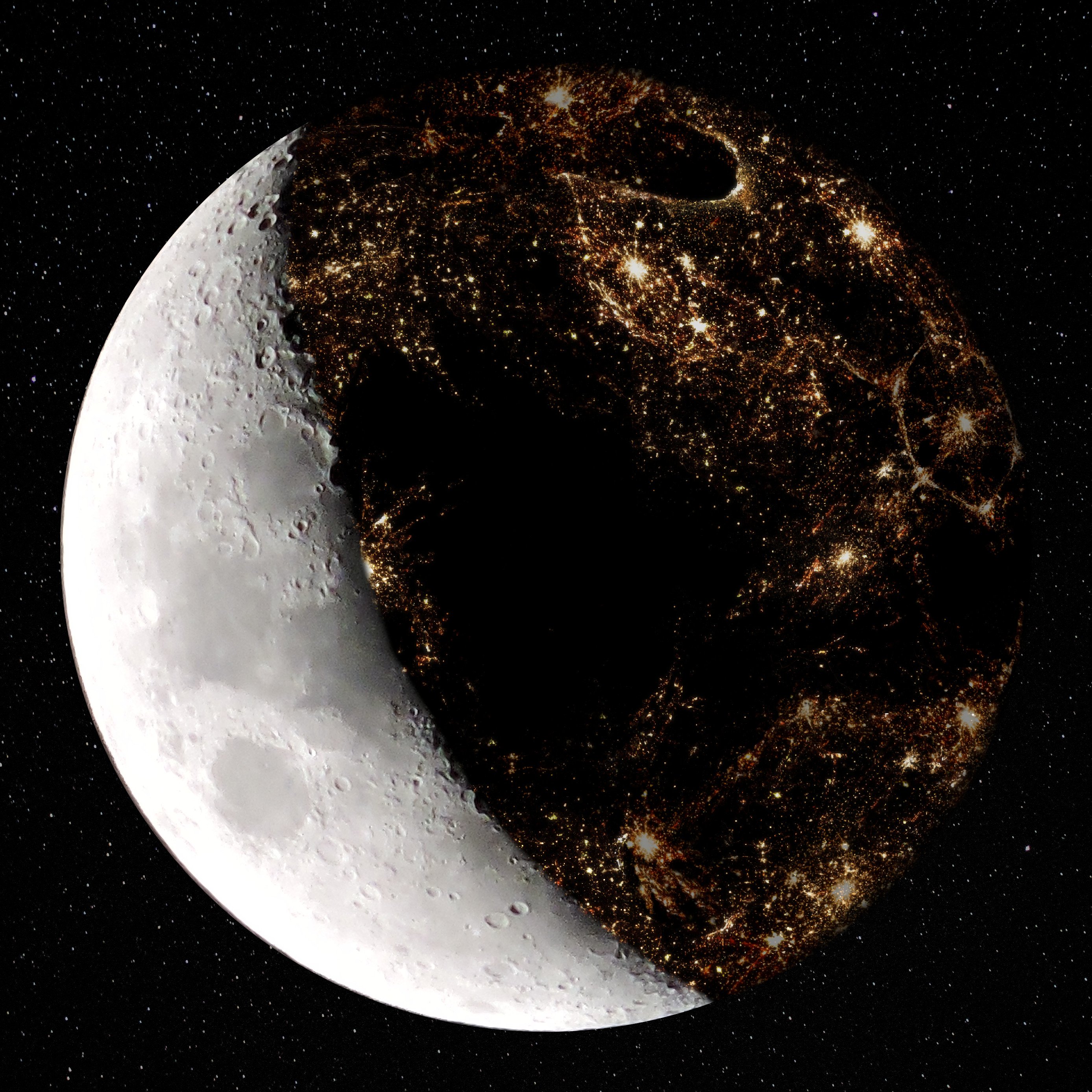While camping, I noticed that if you look long enough at almost any star, you start seeing some tiny, subtle colors in that star. Even crazier, they sometimes flicker between more colors. In my case orange, blue and something like cyan.
Besides constellations, what else could you observe regarding starts, with the naked eye?
I think the flickering and maybe even (some of) the colors are caused by earth’s atmosphere messing with the light.
Most of the more exotic colors (such as green) are caused by various optical tricks.
Physically speaking, all true stars are roughly one of these colors:
- Red
- Orange
- Yellow
- White
- Blue
The exact color of a star depends on its size/temperature. Red stars are the coolest, while blue stars are the hottest.
There are in fact no green stars at all. At least not to human eyes. Very cool and interesting stuff.
https://www.sciencefocus.com/space/why-arent-there-any-green-stars
So not only are we the goldilocks of planet position in the solar system, we are also the goldilocks of star temperature?
No, the sun is actually white. It looks yellow(or red, when closer to the horizon) for the same reason the sky looks blue, rayleigh scattering.
Had we evolved under a red star, I’m pretty sure we’d be saying our star was “white”. We have eyes which were optimised for the frequency spectra of our star.
I assume it’s all relative, right? We could just as easily say there are hotness 1, 2, 3, 4, and 5. The question was, is ours perfect at a 3? And the answer was actually ours is a 4. If our star was a 1 and we evolved under that, I don’t think it would change our perspective on the different hotness levels. A 4 would still be a 4.
The sun is a yellow star. It just looks white to us.
No, it is a yellow dwarf, which has nothing at all to do with the color of the sun and everything to do with the mass,temp and fusion properties of the star.
Color wise though, it doesn’t just look white to us, it IS white. Snow is white because it’s reflecting sunlight, which is also why polar bear fur is white, and it’s why rainbows show all visible colors, because the sunlight they’re formed from contains all visible wavelengths, aka white.
Yes. It’s a yellow star that emits white light, not a white star.
Okay? How is that relevant then, when we’re specifically talking about the color of stars, not their classification?
deleted by creator
Are most of those colors present in the visible sky?
Most of them, yes. The reddest stars (like Proxima Centauri) are too cool and dim to be visible to the naked eye, but if you go somewhere with no light pollution and let your eyes adjust you should be able to perceive some differences between stars.
The stars actually aren’t changing color (besides variables potentially but they don’t change in seconds), they’re changing cause the atmosphere is distorting as the light reaches your eye - one of the reasons we put observatories on like mountain tops and space is that there isn’t as much atmosphere distorting the light (there’s some newer observatories that can counter-distort their mirror to cancel out atmospheric scintillation).
You can see the milky way if you go somewhere with low light pollution! It’s quite breathtaking. Also every star you see with your eyes is in the milky way. You can also see planets with your eyes, but I think that’s just Venus (which is reflective enough to see) they look like stars but move day to day. You can see some supernovae when they happen, sometimes they’re bright enough you can see then in daytime even. The movement of the stars over the year is highly predictable, even over centuries and milleniallia, some of the real old old structures like Stonehenge are aligned with the movement of the night sky. Because our planet rotates, the stars move, except (if you’re in the northern hemisphere) for Polaris which only kinda wobbles over a year - it wasn’t always Polaris, it had historically been other stars (were talking long long ago history not a lifetime lol), Polaris is in Ursa Minor in the night sky if you wanna find it 😀
If you keep a journal of the night sky you’ll probably notice a lot of the same stuff our ancient ancestors did! We have the disadvantage of light pollution but the advantage of thousands of years of scientific advancement and written and oral knowledge.
You can also see planets with your eyes, but I think that’s just Venus (which is reflective enough to see) they look like stars but move day to day.
Jupiter, Saturn, and Mars can be seen clearly from the Northern hemisphere if you’ve got fairly clear skies too :)
How stoned were you when you posted this?
It would be much more surprising if they didn’t have any colour. How would that even work?
I expected them to be white and white is a non color, as far as I know.
White is just a mix of all the colours.
(Mr.) ROY G. BIV was how I was taught to remember it
Talking about stars and light, white is the opposite of a non-color. It’s all the colors all at once. Black is the only nob-color. Our sun isn’t actually white, it emits a broad spectrum of light which appears white to our eyes, it actually emits more green to blue-green light than anything else. Look-up the sun’s spectrum or the main sequence of stars and you’ll see what I mean.
Black is no color. Think a black hole, it doesn’t let any light escape.
Betelgeuse will be going supernova in the next few decades and I’ve been looking at the light fluctuations.
In reality, it’s probably already happened! And the light just hasn’t reached us yet
Pretty insane to think about thatWill we get any of the radiation? Does anyone know this?
Probably not, but at most it would be detectable levels. Radiation drops at the square of distance, and there is a lot of distance.
550 Lj, but its only expected in 1,5mio Years
[15] R Neuhäuser, G Torres, M Mugrauer, D L Neuhäuser, J Chapman, D Luge, M Cosci: Colour evolution of Betelgeuse and Antares over two millennia, derived from historical records, as a new constraint on mass and age. In: Monthly Notices of the Royal Astronomical Society. Band 516, Nr. 1, 5. September 2022, ISSN 0035-8711, S. 693–719, doi:10.1093/mnras/stac1969
1.5 million?
100,000 years is the much more commonly reported number.Still though, should interpret my “probably” as more of a “maybe”, haha
You can only get this effect in the center of your visual field due to the organization of your retina where you have color vision. The rest of your eye is much more sensitive to light so you can see dim stars more easily in your periphery by looking away from them a bit. Maybe you can use your own biology to help enjoy the night sky even more! If you get a friend, you can use colored pen caps and get them to hold them in your periphery and tell them what color it is. You don’t be able to until they reach the color vision part of your visual field if you stay looking forward.
It’s trippy, but your brain fills in color for you a lot of the time.
Check out Albereo. Super easy to spot in the summer in the northern hemisphere. Tip of Cygnus’s tail. Two stars with strikingly different colors. Should be able to separate them with a decent set of binoculars. Yellow and blue.
Over the year, the starts shift position. They rise about 4 minutes earlier every day. So some stars you can see now will be invisible for you in a few months.
Stars can appear red or blue depending on the direction they are traveling. It has to do with the frequency of light they put out. As they move away the frequency gets lower, which we interpret as red. As they get closer the frequency gets faster which we interpret as blue.
I am not an astronomer or even a casual stargazer. I took a single class in Astronomy in college and this was a neat fact I picked up. I remember next to nothing else from the class other than the fact that you can fit every planet between the earth and moon.
That isn’t really observable to our naked eye though, that’s Doppler shift and is the same thing that makes a sound change pit h if it’s coming towards you or away from you (think of a siren as a cop car passes you). The Doppler shift, or redshift of stars and other celestial objects is how the expansion of the universe can be observed and measured.
This is all correct and is commonly known as redshift or blueshift. It’s the same idea as when a car or train passes by and you hear the pitch get higher as it approaches you, and then lower as it leaves you.
To add to it though, stars themselves (regardless of our perspectives on them) do come in different colors. Betelgeuse is an easy star to find in the night sky that has a distinctly redder color compared to most stars. It’s the left armpit star in the constellation Orion.
Stars have different colors based on many factors like their composition and how hot they burn.
I don’t think redshift applies to stars, as all the stars we can see are in the milky way and not moving away from us, not sure of there’s any galaxies you can see with the naked eye
It does apply, technically, but yeah the effect is too small to see with the naked eye
A few nearby galaxies are visible, most notably Andromeda, but still redshift isn’t naked eye visible for these
If you are out somewhere dark enough and look up long enough, you usually see several shooting stars.
Also interesting: some cultures recognize images in nebulae and dark spots in the sky instead of or alongside constellations (eg. Australian indigenous Emu in the Sky)
I just read this article about it https://en.wikipedia.org/wiki/Australian_Aboriginal_astronomy
Thanks!
Many stars are double stars, some you can see with the naked eye, some you can’t.
The most well known pair is Mizar and Alcor, but you need very good vison, and very clear, dark skies to see them both.
https://earthsky.org/brightest-stars/mizar-and-alcor-the-horse-and-rider/
Stars have color in outer space. Stars flicker because of the atmosphere.
Our star is actually green, but its the yellows and reds that manage to filter through our atmosphere the best, so that’s what we see. Then if you looked at it from space, it’s so extremely bright it appears white. But its actually emitting more green light than any other colors, and you can make out a tiny greenish tint to it in some space photos. Or my mind plays tricks on me because I’m looking for it, one of the two.
Don’t think this is true. I didn’t find any good sources. Wikipedia mainly talks about sunlight like it arrives down here. But if you google ‘sun spectrum’ the images that show up look more like the peak is in the blue range.
Also mind your eyes aren’t perfect measuring devices. Their sensitivity also isn’t linear. For example we’re more sensitive to green light if I remember correctly. Because of evolution and lots of things in nature are green.
Its ‘true’. But we just call those kinds of stars white. Green is the middle wavelength we can see (because our suns output is centered there). It also outputs lots of all visible light though. Red stars and Blue stars are red or blue because their central output is shifted towards a different part of the EM spectrum, and red/blue are the outer wavelengths on either side.
http://solar-center.stanford.edu/SID/activities/GreenSun.html
Eye sensitivity comment is good point too, I didn’t think of that.
I don’t quite get why they say ‘the Sun’s visible output peaks in the green’. And immediately follow that up with a diagram where the peak is somewhere between blue and cyan… Or are my eyes off?
The 2nd image, to me, seems to show that green has a wider amount of emitted green light:
http://solar-center.stanford.edu/SID/activities/images/solar_spectrum_composite.jpg
I hope I don’t sound too argumentative, because I really don’t actually care too much about the exact color of sunlight. But I think this is a diagram from earth’s perspective. It has these dents in the longer wavelengths where certain frequencies get absorbed by elements it traveled through, and the UV is filtered out. Both indicators it went through the atmosphere.
Yea I don’t really get it either. My physics is not particularly strong though.
What they’re really saying is that the dominant wavelength our sun emits is around 500 nm. Which by definition is green light. Astronomers also call everything heavier than helium a metal, which isn’t true but that’s how they work.






